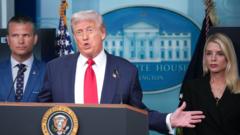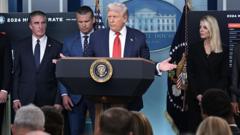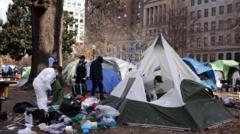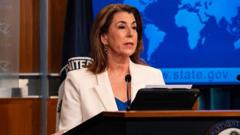The recent travel ban by Donald Trump targets 12 countries, citing national security concerns. This article explores the underlying reasons for these restrictions, ranging from alleged terrorist affiliations to visa overstay rates, offering a balanced perspective on the implications of these decisions.
Analyzing Trump's Travel Ban: Understanding the 12 Affected Countries
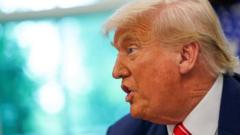
Analyzing Trump's Travel Ban: Understanding the 12 Affected Countries
A deep dive into the rationale behind the recent travel ban imposed by Former President Trump, affecting twelve countries primarily in Africa and the Middle East.
The recent travel ban announced by former President Donald Trump has drawn significant attention due to its impact on twelve countries predominantly from Africa and the Middle East, alongside partial restrictions on an additional seven nations. Officially positioned as a national security measure, the ban references a variety of alleged violations related to U.S. immigration laws and security concerns.
**Afghanistan's Position:** The prohibition includes Afghanistan, flagged for its association with the Taliban, a designated terrorist group. Trump's proclamation criticizes Afghanistan for its inability to issue valid passports and civil documents and for the number of Afghan nationals who overstay their visas. Ironically, the ban comes after a previous indication that conditions in Afghanistan were improving, particularly with the termination of Temporary Protected Status for Afghan immigrants.
**The Case of Iran:** Iran's addition to the ban stems from its longstanding designation as a state sponsor of terrorism, a claim the Iranian government vehemently denies. The proclamation underscores accusations that Iran supports proxy terrorist organizations and fails to cooperate in identifying security risks, particularly concerning deported nationals.
**Somalia and Libya:** The ban also targets Somalia, labeled as a "terrorist safe haven," with similar accusations about the government's weak grip on territory and inability to accept deported nationals. Libya is criticized for its historical links to terrorism, raising concerns for American security.
**Haiti and Visa Overstays:** Haiti's inclusion can be largely attributed to the significant number of illegal immigrants that have entered the U.S. in recent years, along with claims surrounding inadequate law enforcement capabilities. Trump's articulation suggests that the influx has resulted in heightened criminal activity.
**Chad, Congo-Brazzaville, and Equatorial Guinea:** These countries are targeted primarily over high rates of visa overstays, with Chad noted for a concerning overstay rate of approximately 49%.
**Myanmar:** Historically referred to as Burma, Myanmar is similarly criticized for failing to cooperate on issues related to deportations, alongside high visa overstay rates.
**Eritrea, Sudan, and Yemen:** The proclamation addresses these nations' dubious processes for issuing civil documents. Yemen's situation is particularly precarious, being the active theater for U.S. military operations.
**Partial Restrictions on Other Nations:** The travel ban also places partial restrictions on seven other countries, notably Venezuela and Cuba, with issues surrounding governance and the acceptance of deported individuals cited as major factors.
In sum, Trump's travel ban reflects broader discussions about national security, immigration policies, and international relations, with implications that resonate across political and cultural spectrums worldwide.
**Afghanistan's Position:** The prohibition includes Afghanistan, flagged for its association with the Taliban, a designated terrorist group. Trump's proclamation criticizes Afghanistan for its inability to issue valid passports and civil documents and for the number of Afghan nationals who overstay their visas. Ironically, the ban comes after a previous indication that conditions in Afghanistan were improving, particularly with the termination of Temporary Protected Status for Afghan immigrants.
**The Case of Iran:** Iran's addition to the ban stems from its longstanding designation as a state sponsor of terrorism, a claim the Iranian government vehemently denies. The proclamation underscores accusations that Iran supports proxy terrorist organizations and fails to cooperate in identifying security risks, particularly concerning deported nationals.
**Somalia and Libya:** The ban also targets Somalia, labeled as a "terrorist safe haven," with similar accusations about the government's weak grip on territory and inability to accept deported nationals. Libya is criticized for its historical links to terrorism, raising concerns for American security.
**Haiti and Visa Overstays:** Haiti's inclusion can be largely attributed to the significant number of illegal immigrants that have entered the U.S. in recent years, along with claims surrounding inadequate law enforcement capabilities. Trump's articulation suggests that the influx has resulted in heightened criminal activity.
**Chad, Congo-Brazzaville, and Equatorial Guinea:** These countries are targeted primarily over high rates of visa overstays, with Chad noted for a concerning overstay rate of approximately 49%.
**Myanmar:** Historically referred to as Burma, Myanmar is similarly criticized for failing to cooperate on issues related to deportations, alongside high visa overstay rates.
**Eritrea, Sudan, and Yemen:** The proclamation addresses these nations' dubious processes for issuing civil documents. Yemen's situation is particularly precarious, being the active theater for U.S. military operations.
**Partial Restrictions on Other Nations:** The travel ban also places partial restrictions on seven other countries, notably Venezuela and Cuba, with issues surrounding governance and the acceptance of deported individuals cited as major factors.
In sum, Trump's travel ban reflects broader discussions about national security, immigration policies, and international relations, with implications that resonate across political and cultural spectrums worldwide.





